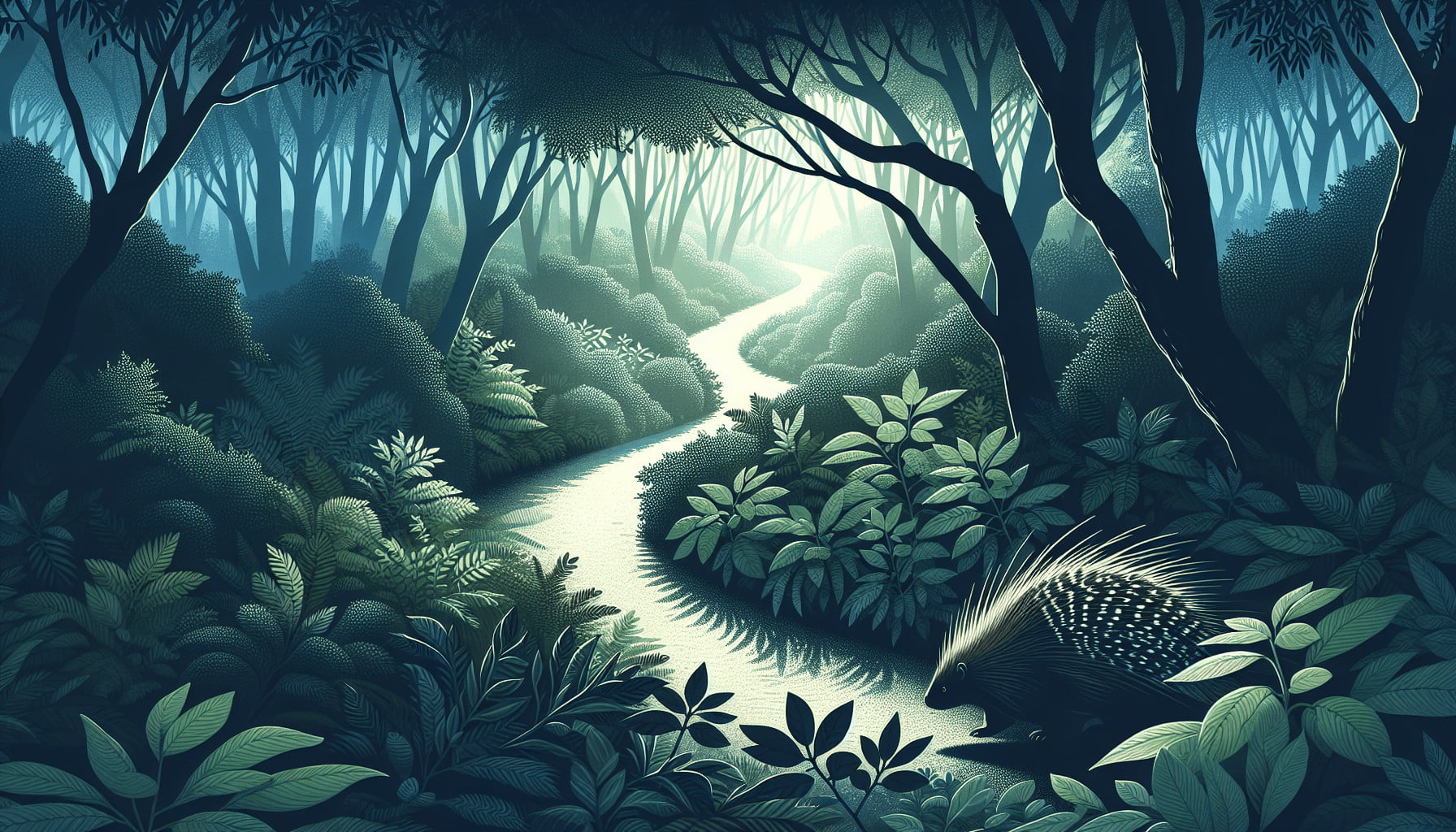You ever find yourself pondering how to avoid those spiky little critters known as porcupines? They may seem harmless from a distance, but a close encounter can result in a pretty prickly situation. In this article, we’ll explore some of the most effective ways to steer clear of porcupines and ensure that you and those around you remain quill-free.
Understanding Porcupines
Before we get into the nitty-gritty of avoidance, let’s first understand a bit more about these creatures. Knowing your ‘enemy’ can actually help you stay out of their way more effectively.
What Are Porcupines?
Porcupines are large rodents found in various parts of the world. They are easily recognizable by their coat of sharp quills, which they use as a defense mechanism against predators. These quills can detach and embed in the skin of an attacker, causing significant discomfort.
Porcupine Habitats
Porcupines can be found in forested areas, grasslands, and sometimes even in your backyard. They are nocturnal creatures, meaning they are most active at night. Understanding where and when porcupines are most likely to be can help you avoid crossing paths with them.
Porcupine Diet and Behavior
Porcupines predominantly feed on tree bark, leaves, and other vegetation. They are generally slow-moving and non-aggressive unless threatened. Their primary defense is their quills, which can cause serious injury if you’re not careful.
Avoiding Porcupine Encounters
Now that we’ve covered the basics, let’s dive into specific ways to avoid these sharp-toothed critters. Here are some practical strategies for steering clear of porcupines, whether you’re hiking in the woods or just taking a walk in your neighborhood.
Be Mindful of Your Surroundings
One of the most effective ways to avoid porcupines is simply to be aware of your surroundings. Pay attention to signs of porcupine activity, such as gnawed tree bark or quills on the ground. If you notice these signs, it’s best to steer clear of the area.
Travel in Groups
Porcupines are less likely to approach larger groups of people. If you’re hiking or camping, try to stay with your group. The noise and size of a group can act as a deterrent to porcupines and many other sorts of wildlife.
Use a Flashlight at Night
Since porcupines are nocturnal, you’ll want to be especially cautious during evening and nighttime activities. Always use a flashlight when walking around after dark to spot any porcupines before you get too close.
Keep Pets on a Leash
Pets, especially dogs, are naturally curious and may approach a porcupine, resulting in a painful encounter. Keeping your pets on a leash can help prevent them from getting too close to a porcupine.
Maintain a Clean Campsite
If you’re camping, make sure to keep your campsite clean. Porcupines, like many other animals, are attracted to food scraps and waste. Store food in secure containers and dispose of trash properly to minimize the chances of attracting porcupines to your campsite.

Porcupine Safety Precautions
While avoidance is the best strategy, sometimes you may still find yourself in the vicinity of a porcupine. Knowing how to handle such situations can make all the difference.
Recognize the Signs of a Threatened Porcupine
A threatened porcupine will often raise its quills and turn its back toward you. If you see a porcupine displaying this behavior, back away slowly and give the creature plenty of space.
Never Corner a Porcupine
If you accidentally corner a porcupine, it may feel threatened and could charge at you. Always give porcupines a clear escape route to reduce the chances of an aggressive encounter.
Use a Stick to Gently Move Them Along
In some cases, you might need to encourage a porcupine to move out of your way. Using a long stick, gently tap the ground near the porcupine to guide it in the direction you want it to go. Avoid touching the porcupine directly to prevent any chance of quills detaching.
Handling a Porcupine Encounter
Even with all the precautions, you might still find yourself in a situation where a porcupine is too close for comfort. Here’s what to do if you find yourself in this prickly predicament.
Stay Calm
Panicking will only make the situation worse. Take a deep breath and assess the situation calmly. Remember, porcupines are generally non-aggressive and will likely try to avoid you if given the chance.
Back Away Slowly
If you encounter a porcupine, don’t make any sudden movements. Slowly and calmly back away, giving the porcupine plenty of space. Most of the time, they’ll scurry away once they realize you’re not a threat.
Avoid Direct Eye Contact
Direct eye contact can be interpreted as a threat by many animals, including porcupines. Avoid staring directly at the porcupine, but keep it in your peripheral vision as you gradually distance yourself.

What To Do If You Get Quilled
Despite your best efforts, accidents can happen. Getting quilled by a porcupine is painful and requires immediate attention.
Don’t Remove Quills with Bare Hands
Porcupine quills have barbs that make them difficult to remove. Using bare hands can cause the quills to break and embed deeper into the skin. Use tweezers or seek medical attention for proper removal.
Clean the Affected Area
After removing quills, clean the affected area with soap and water to prevent infection. Applying an antiseptic can also help reduce the risk of bacterial infections.
Seek Medical Attention
If the quills are deeply embedded or located in sensitive areas, such as near the eyes or mouth, it’s crucial to seek immediate medical attention. A healthcare provider can safely remove the quills and provide the necessary care to prevent complications.
Preventing Future Encounters
Once you’ve had an encounter with a porcupine, it’s understandable to want to avoid any future run-ins. Here are some long-term strategies to help keep porcupines at bay.
Install Motion-Activated Lights
Motion-activated lights can deter nocturnal creatures like porcupines from entering your yard or campsite. These lights startle animals, making them less likely to stick around.
Use Natural Repellents
Certain natural repellents, such as hot pepper spray or predator urine, can make your property less attractive to porcupines. These substances can be applied around the perimeter of your yard or campsite as a deterrent.
Secure Your Property
Ensure that your property is well-fenced and that there are no easy entry points for porcupines. Keep garden areas and compost bins secured, as these can attract porcupines looking for a meal.
Educate Your Neighbors
A community-wide effort to avoid porcupine encounters can be more effective than individual actions. Talk to your neighbors about the presence of porcupines and encourage them to take similar precautions to keep your entire area safer.
Summary
Avoiding porcupine encounters is all about being aware and taking a few simple precautions. By understanding their habits and habitats, you can significantly reduce the chances of a prickly encounter. Remember to stay calm, give porcupines plenty of space, and take immediate action if you do get quilled. Implementing these strategies can help ensure that both you and the porcupines remain safe and unbothered.
Quick Reference Table
| Situation | Action |
|---|---|
| Porcupine Sighting | Back away slowly, avoid sudden movements |
| Nighttime Activities | Use a flashlight to spot porcupines early |
| Hiking/Camping | Travel in groups, keep pets on a leash |
| Camping | Maintain a clean campsite, store food securely |
| Encountered Porcupine | Stay calm, avoid direct eye contact |
| Quills Embedded | Use tweezers for removal, seek medical attention |
So, the next time you venture out into porcupine territory, you’ll be well-prepared to avoid any unwanted encounters. Safe travels and happy exploring!
